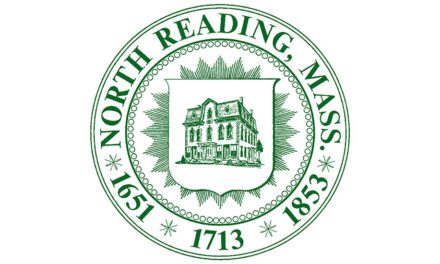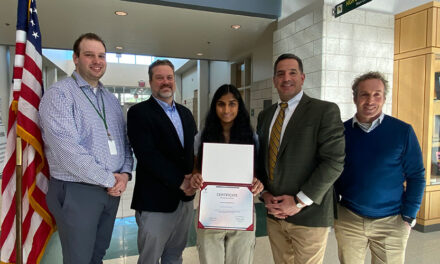Published in the October 11, 2018 edition
NORTH READING — The North Reading Water Department, as part of the maintenance of the water distribution system, has entered the third week of its annual fire hydrant flushing program which will continue until late in October.
Hydrant flushing is used to remove any fine iron or manganese sediment from the water mains in the streets. Iron and manganese are naturally occurring minerals found in the soils near the town’s water supply wells. As precipitation passes down through these solids, iron and manganese dissolve into the water. While the Water Department treats the well water specifically to remove iron and manganese, trace amounts of these minerals remain in the water leaving the town’s water treatment plants.
This remaining dissolved iron and manganese combine with oxygen in the water to form fine particles that settle out of the water in the water distribution system. Iron and manganese do not present health risks, but can cause a number of aesthetic problems, such as discolored water and staining of plumbing fixtures or laundry.
The fine particles of iron and manganese in the water mains can easily become re-suspended whenever there is a change in flow in the water system, such as during a fire or other periods of high water usage. By creating the high flow conditions through hydrant flushing, the Water Department attempts to remove the color-causing particles in a systematic manner.
The flushing program begins in the area of the water supply sources and moves progressively across the town, using areas that have already been cleaned to provide the water to areas yet to be flushed. Flushing will take place on Mondays, Wednesdays, Thursdays and Fridays, typically between the hours of 8 a.m. and 3 p.m. Residents and business owners are cautioned that they may experience discolored water during the hours of flushing in their area.
On the days when your street or neighborhood is being flushed it is recommended that prior to doing laundry you run the cold water tap until it runs clear. Also check the screen in faucet aerators to rinse and remove any sediment that may have settled in it.
For additional information on the flushing program, contact the Department of Public Works at 978-664-6060.
Day 12 – Monday, October 15: Amber Lane, Barbie Lane, First Street, George Root Lane, Haverhill Street (from Charles Street to North Street), Janice Avenue, Lloyd Road, North Street (from Pine Ridge Road to Haverhill Street), Stonecleave Road, Sunset Avenue, Wagon Drive, Wyoming Avenue.
Day 13 – Wednesday, October 17: Anthony Road, Aspen Road, Charles Street, Cheyenne Drive, Colonial Hill Drive, Demetri Lane, Haverhill Street (from Charles Street to Andover Town Line), Peter Road, Westchester Drive, Westward Circle, Hood School.
Day 14 – Thursday, October 18: Ashwood Drive, Boxwood Drive, Chestnut Street (from Haverhill Street to Park Street east), Crestwood Road, Heritage Way, Hickory Lane, Laurel Road, Marshall Street, Parker Drive, Robin Road, Timber Lane.
Day 15 – Friday, October 19: Anglewood Lane, Appletree Lane, Bow Street, Chestnut Street (from Park Street to Lynnfield Town Line), Cobblers Lane, Flint Street, Grandview Road, Harding Road, Larchmont Road, Mount Vernon Street, North Hill Drive, Park Street (from Haverhill Street to Chestnut Street), Parsonage Lane, Railroad Avenue, Roosevelt Street, Rust Lane, Sylvia Road, Takoma Circle, Washington Street, Whitcomb Way, Whittridge Place, Williams Road, Woodland Drive and Wright Street.



